We need your consent to use the individual data so that you can see information about your interests, among other things. Click "OK" to give your consent.
ASTM F1835-97(2012)e1
Standard Guide for Cable Splicing Installations (Includes all amendments And changes 10/25/2018).
Automatically translated name:
Standard Guide for Cable Splicing Installations
STANDARD published on 1.10.2012
The information about the standard:
Designation standards: ASTM F1835-97(2012)e1
Note: WITHDRAWN
Publication date standards: 1.10.2012
SKU: NS-51756
The number of pages: 11
Approximate weight : 33 g (0.07 lbs)
Country: American technical standard
Category: Technical standards ASTM
The category - similar standards:
Annotation of standard text ASTM F1835-97(2012)e1 :
Keywords:
cable splicing, crimp connectors, circumferential crimp, electrical cable splicing, insulation sleeving, ICS Number Code 29.120.20 (Connecting devices)
Additional information
| Significance and Use | ||||||||||||||
|
4.1 Splicing of cables in the shipbuilding industry, both in Navy and commercial undertakings, has been concentrated in repair, conversion, or overhaul programs. However, many commercial industries, including aerospace and nuclear power, have standards defining cable splicing methods and materials that establish the quality of the splice to prevent loss of power or signal, ensure circuit continuity, and avoid potential catastrophic failures. This guide presents cable splicing techniques and hardware for application to commercial and Navy shipbuilding to support the concept of modular ship construction. 4.2 This guide resulted from a study that evaluated the various methods of cable splicing, current technologies, prior studies and recommendations, performance testing, and the expertise of manufacturers and shipbuilders in actual cabling splicing techniques and procedures. 4.3 The use of this guide by a shipbuilder will establish cabling splicing systems that are: simple and safe to install; waterproof; corrosion- and impact-resistant; industry accepted with multiple suppliers available; low-cost methods; and suitable for marine, Navy, and IEC cables. |
||||||||||||||
| 1. Scope | ||||||||||||||
|
1.1 This guide provides direction and recommends cable splicing materials and methods that would satisfy the requirements of extensive cable splicing in modular ship construction and offers sufficient information and data to assist the shipbuilder in evaluating this option of cable splicing for future ship construction. 1.2 This guide deals with cable splicing at a generic level and details a method that will satisfy the vast majority of cable splicing applications. 1.3 This guide covers acceptable methods of cable splicing used in shipboard cable systems and provides information on current applicable technologies and additional information that the shipbuilder may use in decision making for the cost effectiveness of splicing in electrical cable installations. 1.4 This guide is limited to applications of 2000 V or less, but most of the materials and methods discussed are adaptable to higher voltages, such as 5-kV systems. The cables of this guide relate to all marine cables, domestic and foreign, commercial or U.S. Navy. 1.5 The values stated in SI units shall be regarded as standard. The values given in parentheses are inch-pound units and are for information only. 1.6 This standard does not purport to address all of the safety concerns, if any, associated with its use. It is the responsibility of the user of this standard to establish appropriate safety and health practices and determine the application of regulatory limitations prior to use. |
||||||||||||||
| 2. Referenced Documents | ||||||||||||||
|
Similar standards:
Historical
1.8.2013
Historical
1.8.2013
Historical
1.10.2010
Historical
1.10.2013
Historical
1.10.2010
Historical
1.10.2010
We recommend:
Updating of laws
Do you want to be sure about the validity of used regulations?
We offer you a solution so that you could use valid and updated legislative regulations.
Would you like to get more information? Look at this page.


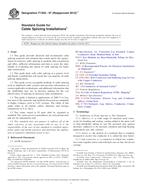
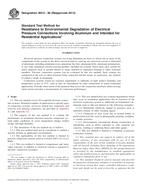 ASTM B812-96(2013)..
ASTM B812-96(2013)..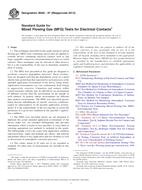 ASTM B845-97(2013)..
ASTM B845-97(2013)..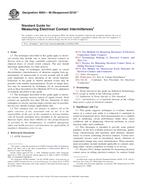 ASTM B854-98(2010)e1..
ASTM B854-98(2010)e1..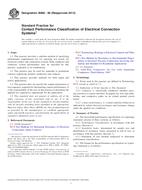 ASTM B868-96(2013)..
ASTM B868-96(2013).. ASTM B913-05(2010)..
ASTM B913-05(2010)..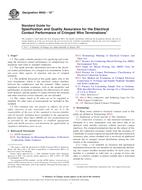 ASTM B942-10e1
ASTM B942-10e1
 Cookies
Cookies
